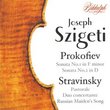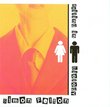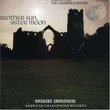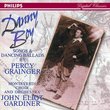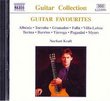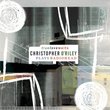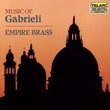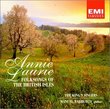| All Artists: Christina Pluhar, L'Arpeggiata Title: Via Crucis Members Wishing: 1 Total Copies: 0 Label: Virgin Classics Original Release Date: 1/1/2010 Re-Release Date: 4/20/2010 Genre: Classical Style: Opera & Classical Vocal Number of Discs: 1 SwapaCD Credits: 1 UPC: 5099969457708 |
Search - Christina Pluhar, L'Arpeggiata :: Via Crucis
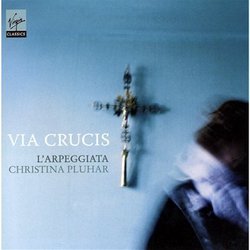 | Christina Pluhar, L'Arpeggiata Via Crucis Genre: Classical
L'Arpeggiata, the French-based ensemble directed by Austrian-born harpist and lutenist Christina Pluhar, releases its second Virgin Classics album, following Teatro d'amore, a programme of Monteverdi which blended instrume... more » |
Larger Image |
CD DetailsSynopsis
Album Description L'Arpeggiata, the French-based ensemble directed by Austrian-born harpist and lutenist Christina Pluhar, releases its second Virgin Classics album, following Teatro d'amore, a programme of Monteverdi which blended instruments and voices, score and improvisation in a kind of sublime Baroque jam session! Figaro magazine observed that "L'Arpeggiata invests Monteverdi with a dazzling array of vocal and instrumental colours. A touch of improvisation raises the singing to an incandescent level ... A unique distillation of explosive vitality," while the leading German news magazine Spiegel exclaimed: "Roll over, Monteverdi; it is a long time since classical music has held so many surprises or taken such a broad view." L'Arpeggiata has made a speciality of exploring and exploiting the close links between Baroque repertoire and the traditional music of the Latin world and its characteristic forms such as the tarantella, the folia or the canario. In this new collection, Via Crucis, 'the way of the Cross', the focus is on the pervasive presence of religious feeling in Southern Europe. The Passion of Christ evokes the same fervour in composers such as Giovanni Felice Sances (1600-1679) or Tarquinio Merula (1594-1665) - both active in northern Italy -- as it does in the streets of Naples or the villages of Corsica. The two main works in the collection are Sance's extraordinary Stabat Mater and Merula's Hor ch'e tempo di dormire, in which the Virgin Mary lulls her baby to sleep while weeping for his future suffering and both enthrall the listener with a basso ostinato and hypnotic swaying rhythms. Reviewing Teatro d'amore, L'Education musicale wrote that: "Ingeniously chosen vocal works are interspersed with important instrumental pieces, taking us on a supreme journey through Monteverdi. The communicative energy and the intense sculptural beauty of pieces like the final duet from L'incoronazione de Poppea or rich sequences of madrigals are transformed by an ensemble that is palpably composed of soloists. Most astonishing of all - and this is a significant discovery - is the modernity that lurks in this music ... A Venetian piece from 1664 makes one wonder whether it's a matter of Monteverdian style or jazz rhythms. ... The addition of two exceptional voices adds further appeal to this fusion of genres : Philippe Jaroussky, whose angelic timbre fills the lines blissfully and Nuria Rial, who brings a velvety tenderness. When they come together the mood reaches sensual heights. This is far more than a compilation ... it is music in its truest manifestation." Similar CDsSimilarly Requested CDs
|
CD ReviewsMusic or Conceptual Art? Giordano Bruno | Wherever I am, I am. | 05/15/2010 (5 out of 5 stars) "That's an open, and I hope non-judgmental, question. "Via Crucis" embodies both a radically creative direction in the performance of 17th C music and an apparently sincere 'spirituality' expressing itself in the concept of a penitential procession in music and words. I make no bones about my indifference to spirituality, so any praise I offer this performance has to do with its musicality. Harpist Christina Pluhar and her ensemble L'Arpeggiata have stretched the limits of "historically informed performance" well beyond any notion of time-machine replication of the sounds people heard in the 1600s. For me, this was and is an inevitable evolution; the purpose of the "early music" movement was never museum-like costume music but rather the development of a NEW playing tradition based on both scholarly and intuitive understanding of OLD music, using old notation and other archival sources, surviving traces of old practice in traditional musics, and of course reproduction of the old instruments along with rediscovery of their virtues. L'Arpeggiata has arrived on the scene at a moment when the skills of the singers and instrumentalists committed to that NEW/Old playing tradition are ripe. It's those skills that make Pluhar's amalgamations and experimentations plausible. But there was precedent for her notions decades ago. Cornettist Doron Sherwin could testify to that; in the late 70s, he was doing some of the same jazzy licks in the California-based ensemble "Pastime with Good Company." Sherwin's role in L'Arpeggiata is indispensable. His improvisations are the 'fire' that ignites many of the tracks on Via Crucis, as well as on Pluhar's earlier CD of Monteverdi, titled Teatro d'Amore. Without Sherwin, a lot of what L'Arpeggiata does would sound heavy-handed. Via Crucis is an amalgamation of written 16th and 17th C compositions by Biber, Rossi, Merula, Sances, and Monteverdi with 'traditional' religious-festive music of Corsica. The performers are amalgamated also: from the HIP world, male soprano Philippe jaroussky and female soprano Nuria Real; from the Trad world, the Corsican male quartet 'Barbara Furtuna', both camps supported by the instruments of L'Arpeggiata: harps, lutes, guitars, psalterion, hammered dulcimer, violins,gambas, cello, contrabasses, organ, harpsichord, and percussion! The "concept" is a Procession, a theatrical representation of the "Way of the Cross". Appropriately, almost all of the music is processional in structure, employing the hypnotic step-rhythms of the passacaglia (pass the street!), ciaccona, and other "figured bass" repetitions that were immensely popular in the 17th C and that have survived in "pop" music around the European-colonized world. On the whole, I find this performance just a little less to my personal taste than Pluhar's Teatro d'Amore CD, but still it's extremely fresh and exciting. I don't want to rubber-stamp every bold trick in Pluhar's bag; the rendition of Merula's 'Hor ch'e tempo di dormire' (track 4) gets altogether too space-age reverberant and quasi-reverent for me. But such energy and imagination must be cultivated if the 'early music' movement has any intentions of surviving and expanding its audience." Pluhar Zachary Rogg-Meltzer | NYC | 05/03/2010 (5 out of 5 stars) "L'Arpeggiata, the French-based ensemble directed by Austrian-born harpist Christina Pluhar has achieved another success, with the release of the new album titled "Via Crucis." The vocal and instrumental components blend together very well, and make this CD an even more powerful listen. There is a religious component that is audible when listening to this piece, which makes sense because "Via Crucis" translates to the way of the Cross. Even if you are not a fan of music with religious undertones, you will still immensely enjoy this CD."
|

 Track Listings (18) - Disc #1
Track Listings (18) - Disc #1